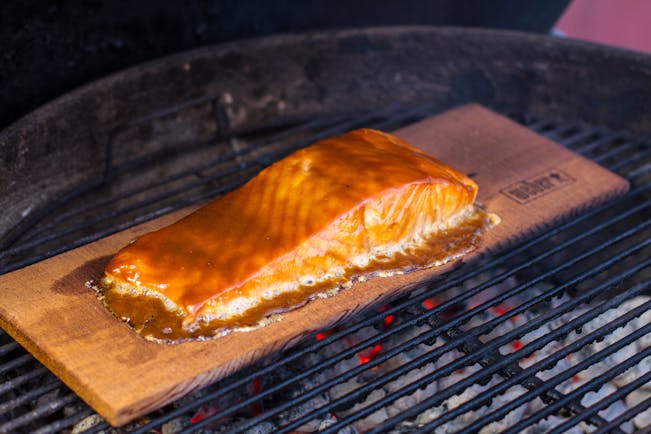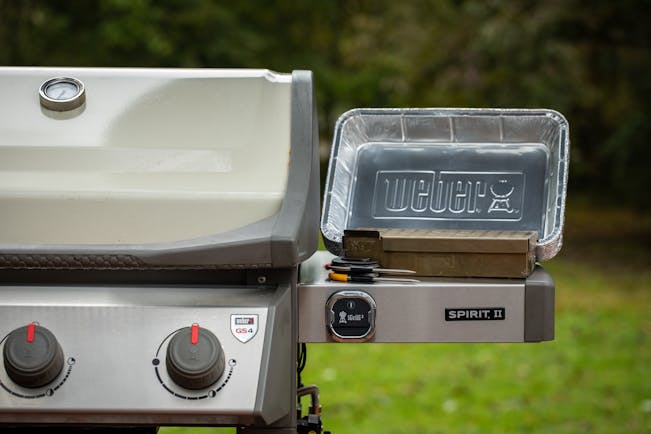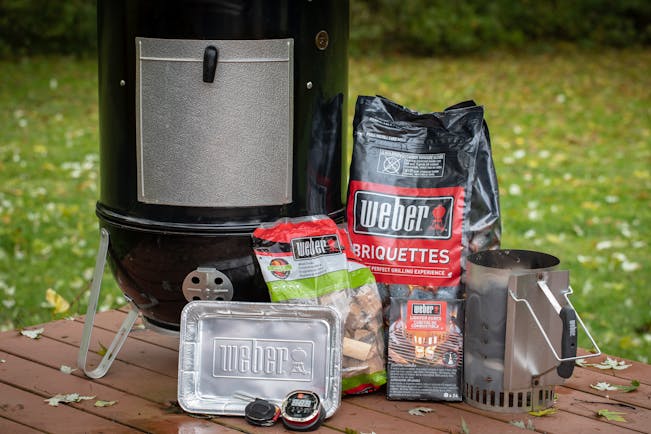Order by 11 am CST on 12/19 for Delivery by 12/24 Christmas Eve! FedEx 2-Day or Next Day Only. Learn More.
How to Cook a Turkey on a Pellet Grill
There’s a reason turkey is the crown jewel of the holiday table, but let’s be honest, it’s also the dish most likely to cause stress. Undercooked thighs, overcooked breasts, soggy skin... the pitfalls are real. Enter the pellet grill: your not-so-secret weapon for producing juicy, flavorful, smoky turkey that gets applause before it even hits the table.
This guide will walk you through everything—from choosing your bird to nailing the perfect cook on your pellet grill. We’ll start with general turkey wisdom that applies no matter how you cook it, then dig into the pellet-grill-specific strategies that transform “just turkey” into something your guests won’t stop talking about.
Turkey Basics: What Everyone Should Know
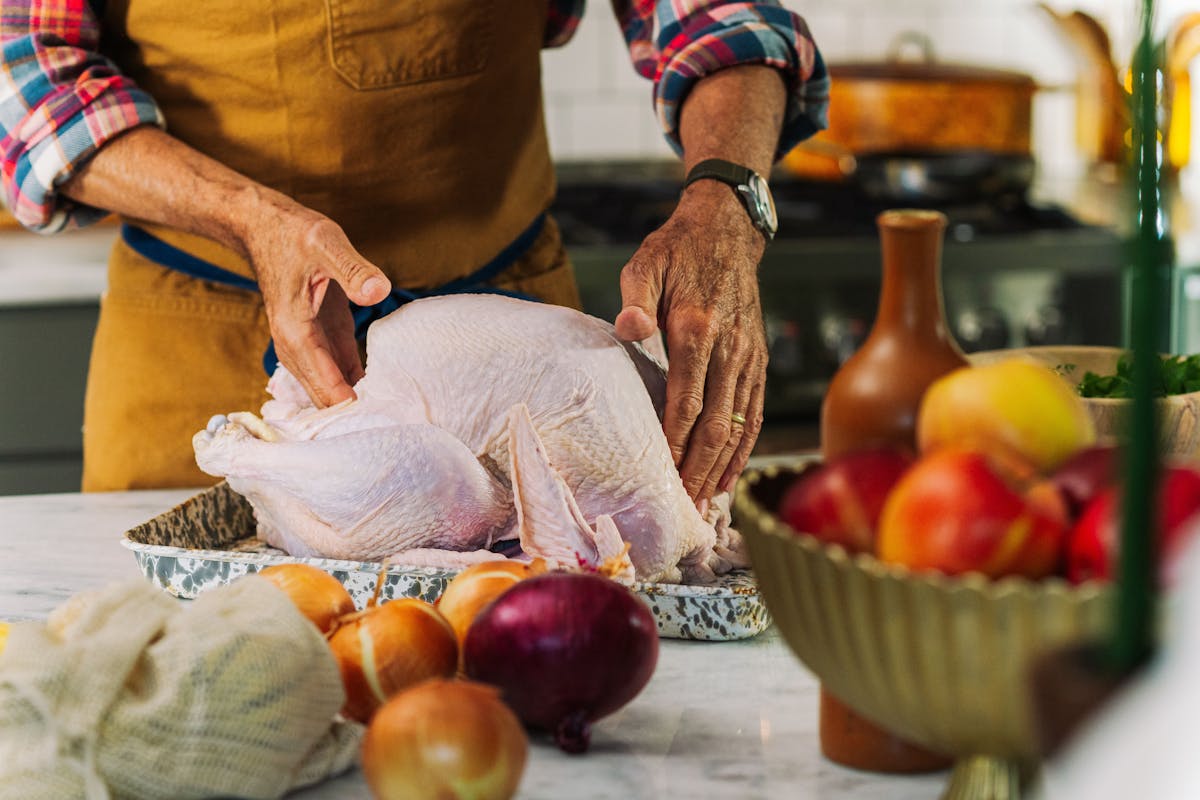
Picking the Right Turkey
Whether you're feeding four or fourteen, you need the right bird for the job. A good rule of thumb is 1 to 1.5 pounds per person. But the bigger the bird, the trickier it is to cook evenly, especially the breast and thighs.
Pro Tip: If you're cooking for a crowd, consider two smaller turkeys (10–12 lbs each) instead of one behemoth. They cook faster, more evenly, and give you more crispy skin.
Be mindful when shopping. Labels matter:
Self-basting or pre-brined? Just skip it. These birds are already injected with a salty solution, which can mess with your seasoning and brine.
Natural, Organic, Heritage? Natural means no artificial ingredients or added color. Organic means the bird was raised without antibiotics or synthetic additives. Heritage birds tend to have more flavor but can be leaner and cook differently. Choose what matters most to you, but don’t get too hung up on the label.
Thawing Times: Don’t Get Caught with a Frozen Bird
If you’re buying a frozen turkey, give yourself plenty of time to thaw it safely. Thawing too quickly or improperly can affect texture and increase the risk of foodborne illness.
Here’s the safe, USDA-approved way to thaw in the fridge:
Fridge Thaw Rule: Allow 24 hours of thawing for every 4–5 pounds of turkey.
10–12 lb turkey: Thaw for 2.5 to 3 days
14–16 lb turkey: Thaw for 3.5 to 4 days
18–20 lb turkey: Thaw for 4.5 to 5 days
Place the turkey (still in its packaging) on a tray or in a pan to catch any juices. Once thawed, it can stay in the fridge for another day or two before cooking.
Need to thaw faster? You can use the cold water method:
Submerge the turkey (in its wrapper) in cold water.
Change the water every 30 minutes.
Allow 30 minutes per pound — a 12 lb bird will take about 6 hours.
Never thaw at room temperature—that's the fast track to the danger zone (bacteria-wise, not Top Gun-wise).
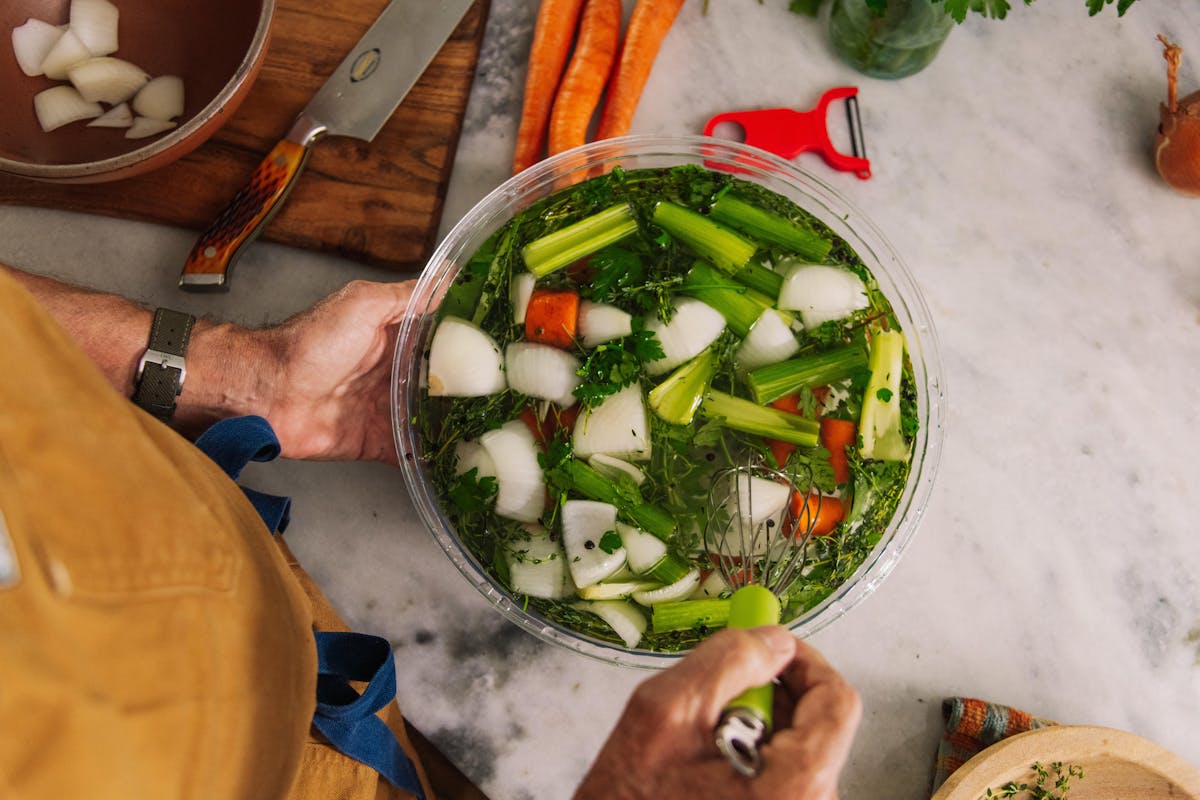
To Brine or Not to Brine
Yes. Brine.
Brining helps lock in moisture and improves flavor from the inside out.
Wet brine: A saltwater soak (often with herbs, citrus, spices) gives you the opportunity to add more complex flavors. It needs 12–24 hours to get the job done.
Dry brine: Relying on salt and time, dry brining focuses on moisture and crispy skin. Rub it on and refrigerate uncovered for 24–48 hours for crispier skin and deeper flavor.
Seasoning and Trussing
Once brined, pat your bird dry. Rub softened butter or oil under and over the skin. Don’t forget the cavity—aromatics like citrus, garlic, onion, rosemary, and thyme add flavor from within.
Tie the legs together with kitchen twine and tuck the wings under to ensure even cooking and better presentation.
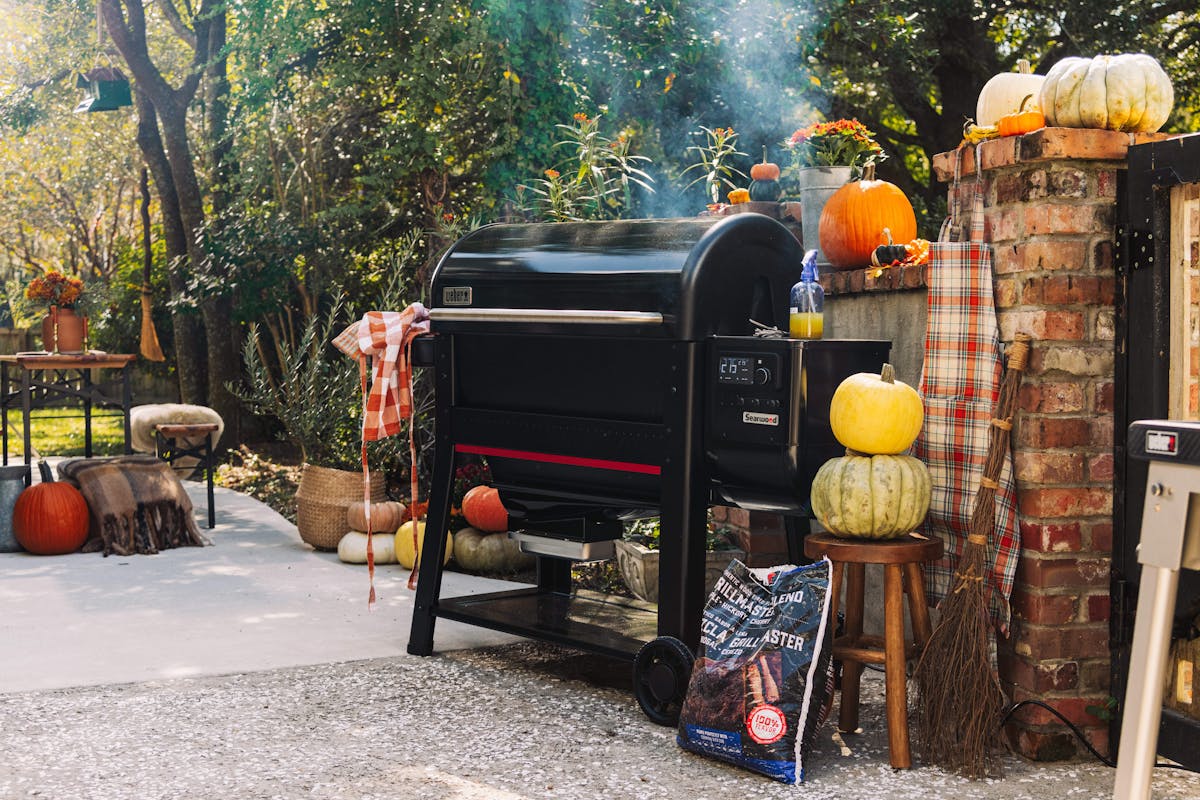
Why Pellet Grills Make Amazing Turkey
Pellet grills are flavor machines. They combine the steady heat of an oven with the smoky goodness of real wood—without the babysitting that comes with traditional smokers.
With pellets, you can dial in both heat and flavor. Want a mild, fruity smoke? Grab apple or cherry. Want something bolder and richer? Go for hickory or our Grillmaster Blend.
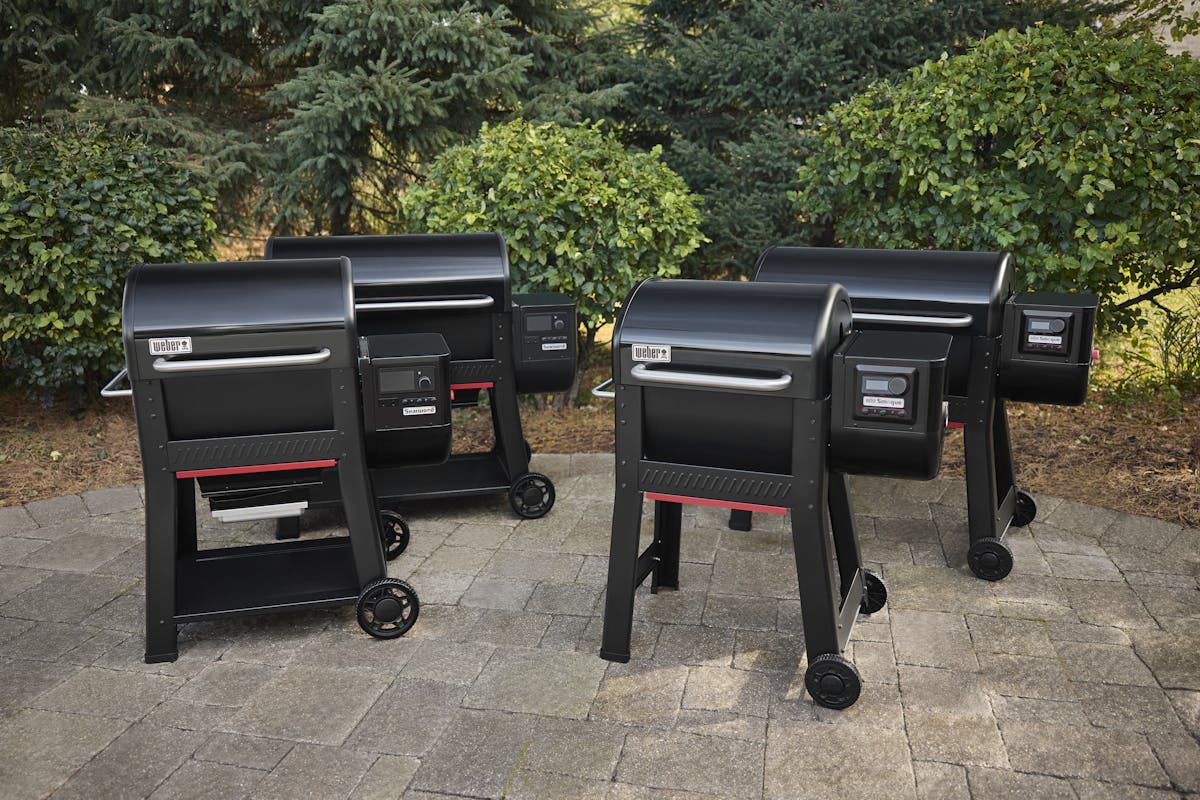
Temperature Strategy: Low & Smoky vs. Hot & Crispy
Choose Your Cook Style
When it comes to cooking turkey on a pellet grill, you’ve got two solid strategies, each with its own strengths, depending on your goals for flavor, texture, and timing.
Low & Slow (275°F): Best for deep smoky flavor. The lower temp gives smoke more time to infuse the meat, but the skin may need crisping at the end.
Hotter & Faster (325–350°F): Prioritizes crisp skin and faster cook times. Less smoke, but a more balanced cook, especially for larger birds.
Important Note: Large turkeys (16 lbs and up) should be cooked at the higher end of the temp range (325–350°F). If you want to cook low and slow, while still feeding a crowd, just cook two birds at once.
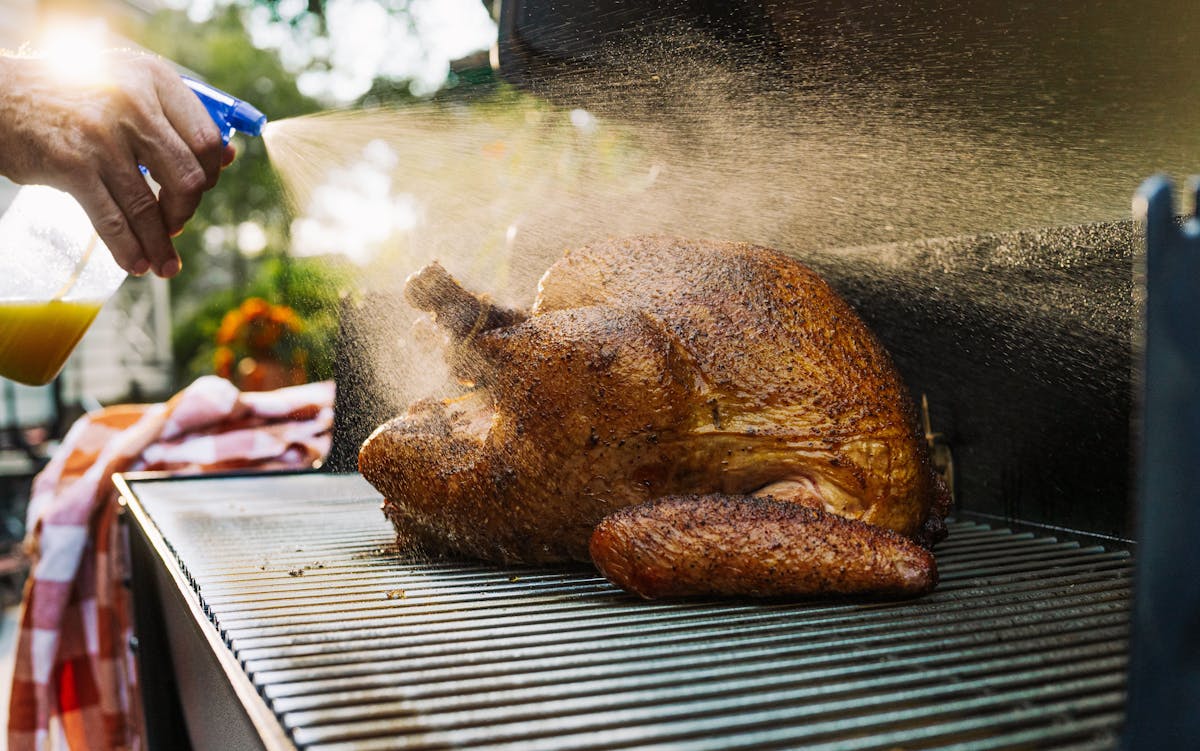
Time & Temp Guide
Cook to internal temperature, not by the clock. But here’s a rough guide for planning:
At 275°F (Low & Slow):
~20–25 minutes per pound
12 lb bird: ~5–6 hours
16 lb bird: ~6.5–7.5 hours
At 325–350°F (Hot & Fast):
~13–15 minutes per pound
12 lb bird: ~2.5–3 hours
16 lb bird: ~3.5–4 hours
20 lb bird: ~4.5–5 hours
Target Temps:
Breast: Cook to 155°F, then rest—the temp will rise to ~160–165°F.
Thigh: Aim for 165°F before resting.
Use the probe that comes with your grill to monitor the progress of your turkey as it cooks, even when you’re away from the grill!
Where to Place the Turkey
Pellet grills don’t have traditional “zones” like gas grills. They heat evenly across the cooking surface using indirect convection heat.
So just place your turkey in the center of the grill grates, breast side up. That’s it.
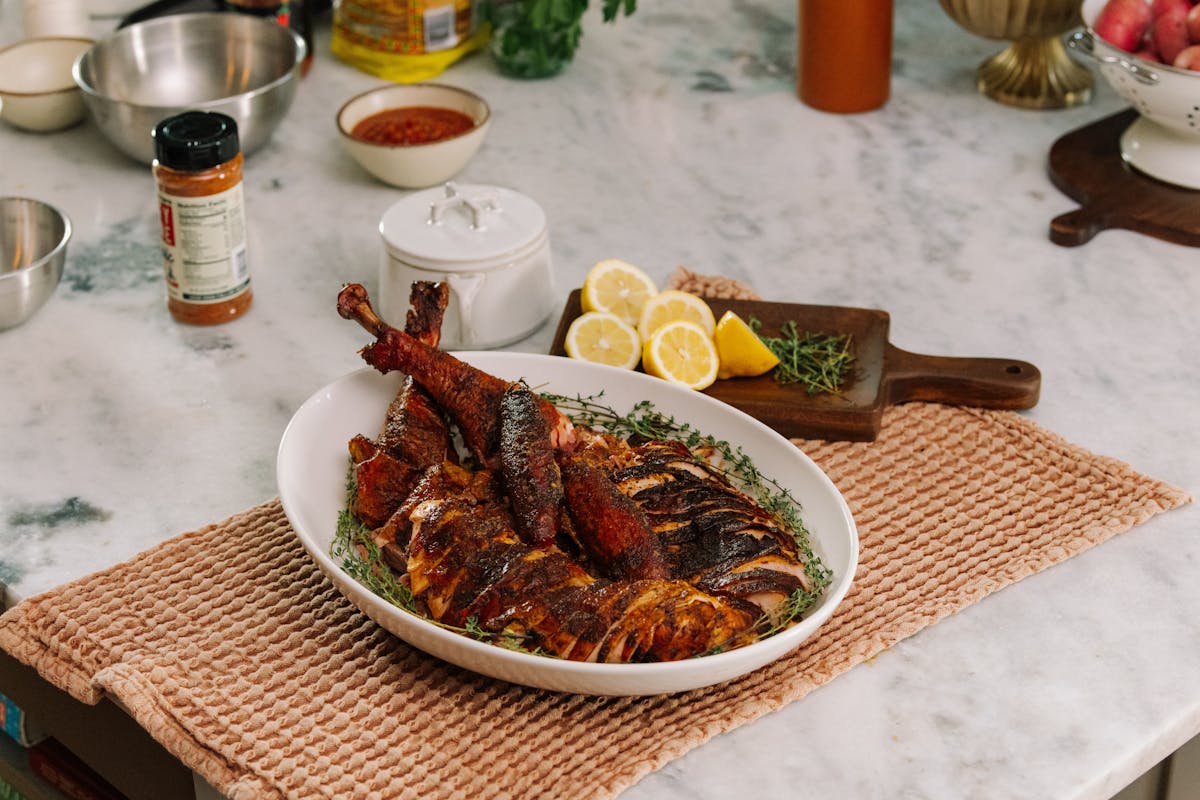
Rest and Serve Like a Pro
When your turkey hits temp, resist the urge to carve immediately. Rest it under a loose foil tent for at least 30 minutes, but preferably a full hour. This lets the juices redistribute and gives you time to prep sides or wrangle guests.
Then carve, serve, and soak in the smoky applause.
Extra Tips for Pellet-Grilled Turkey Glory
Extra Tips for Pellet-Grilled Turkey Glory
- Spatchcock the bird if you want even faster cooking and max crispy skin.
- Crispy skin craving? Crank the grill to 425°F for the last 10 minutes.
- Butter under the skin = bonus flavor and extra moisture.
- Don't stuff the turkey. It slows down cooking and can harbor bacteria. Cook dressing separately.
With a bit of planning, the right tools, and the smoky magic of your pellet grill, you can turn turkey from stress into centerpiece success. Whether you're cooking for your in-laws or just want leftovers for the week, your bird’s about to become legendary.
Happy grilling!
